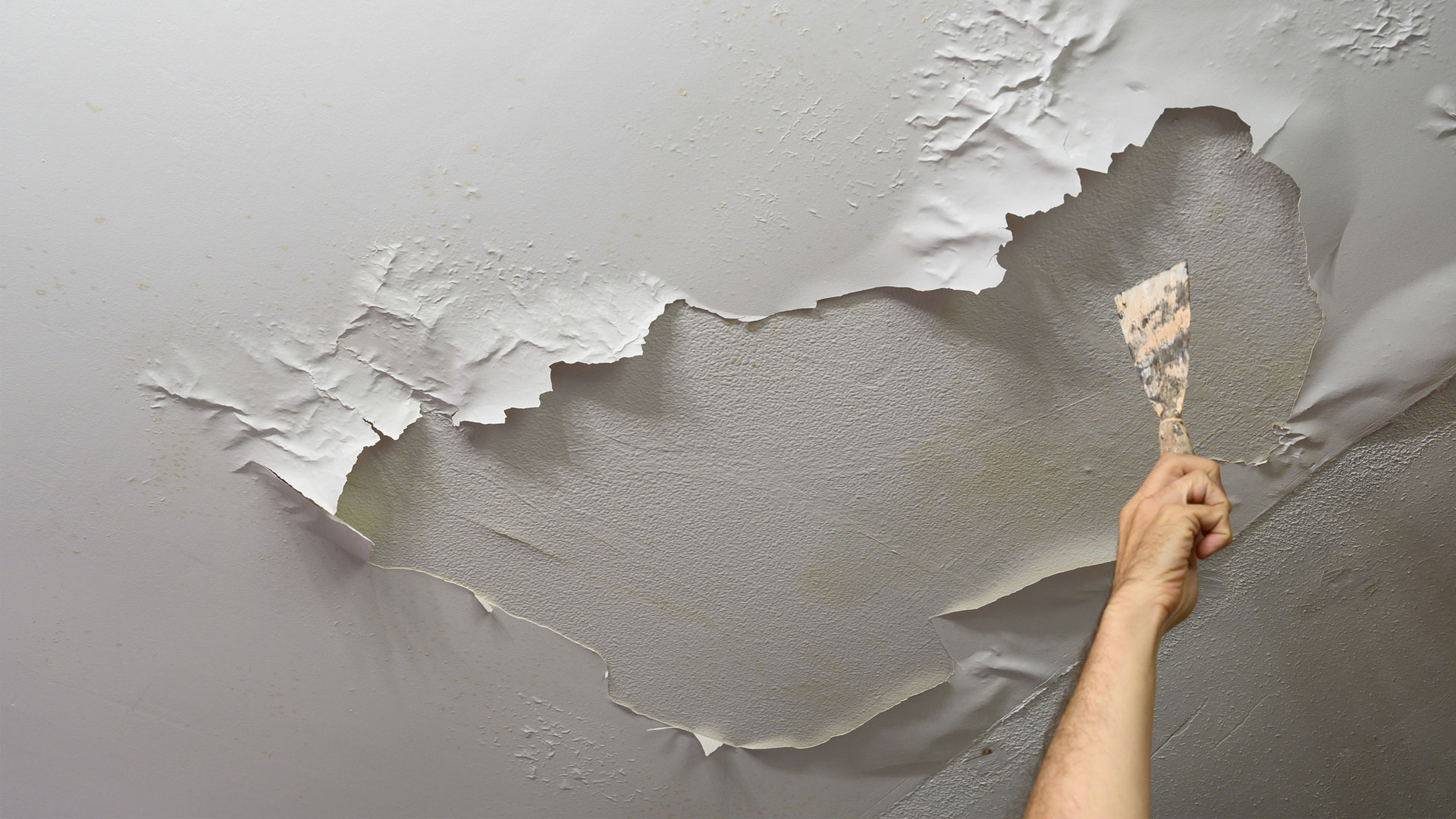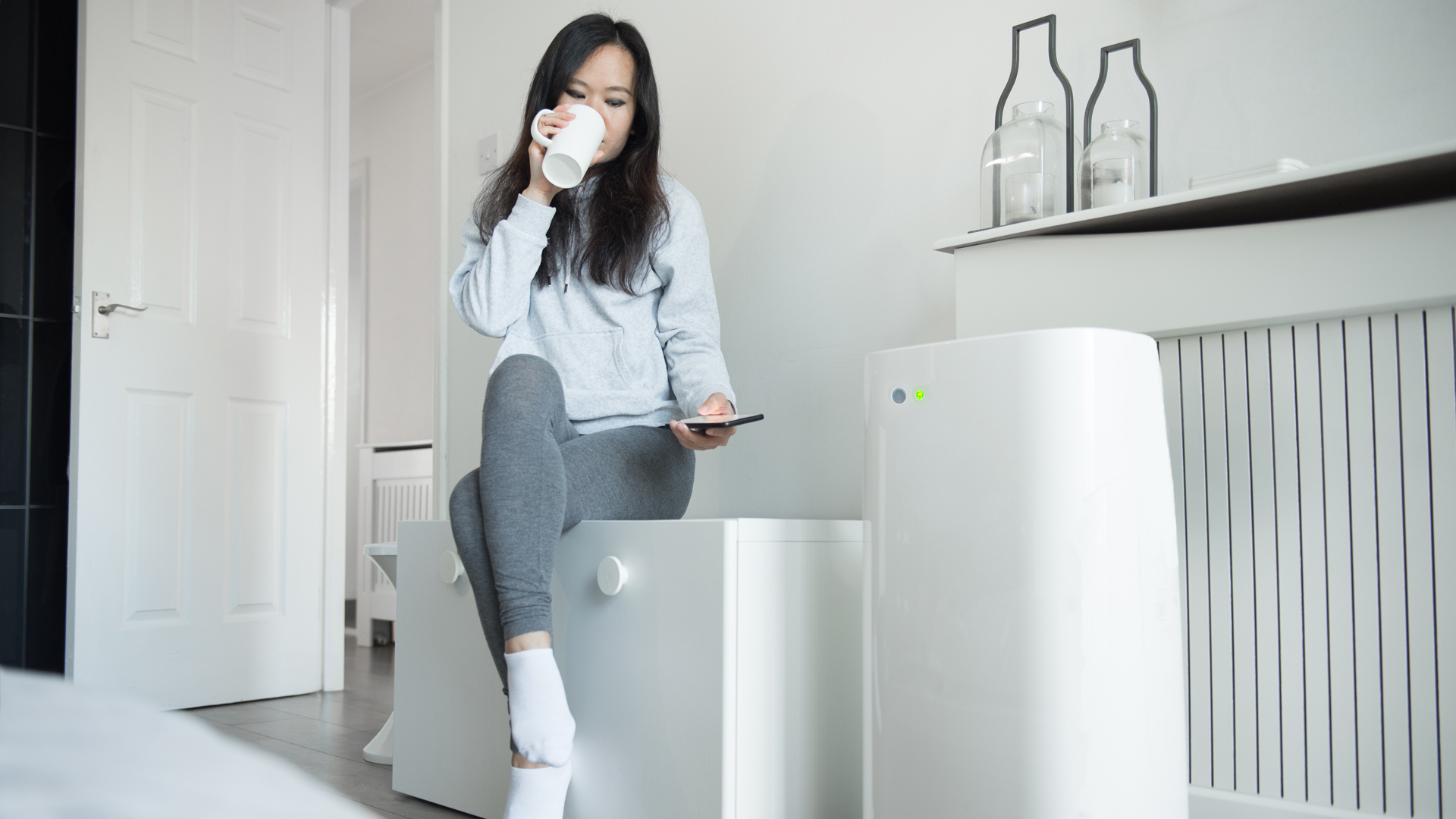Does a dehumidifier cool a room?
Dehumidifiers remove excess moisture from a room, but does a dehumidifier cool a room? We explore the answer here.

Dehumidifiers are an increasingly popular choice, but does a dehumidifier cool a room? Not only can reducing humidity make your room more pleasant, but it can also help protect the people in your home from a host of health issues, including respiratory problems and allergies. Dehumidifiers can also stop the growth of mold, which can be damaging and dangerous to health.
Understanding how the best dehumidifiers work and what they do can help us answer the question; does a dehumidifier cool a room? While dehumidifiers aren’t designed to reduce a room’s temperature, removing humidity can make it feel cooler and more comfortable. They can even have some surprising benefits, with dehumidifiers helping with snoring and other issues.
Does a dehumidifier cool a room?
Dehumidifiers remove excess moisture in the air by drawing it in from the outside and cooling it. A refrigerant (or compressor) dehumidifier draws in air. This then passes through a cold coil that causes the moisture within the air to condense, becoming water that subsequently drops to a reservoir at the bottom of the machine.
Alternatively, a desiccant dehumidifier uses an absorbent material, such as silica gel or Zeolite, typically formed into a rotor. Air is pushed through the rotor, where the desiccant material removes moisture from the air. While they remove humidity, neither type of dehumidifier won’t noticeably affect the temperature of a room. However, removing humidity may make the room feel cooler.
Dehumidifiers aren’t the same as air conditioning units, which are designed to generate cold air that’s pumped into a room in order to lower the temperature. In contrast, dehumidifiers remove the moisture from the existing air within a space.
However, while not specifically designed to cool a room, dehumidifiers still do an essential job within the home. A 2018 study from the International Journal of Hygiene and Environmental Health found that humid air is associated with a whole range of health issues. No matter what causes dampness in a house, excessively high humidity can lead to the growth of damp and mold, which can be dangerous to health, according to the Center for Disease Control and Prevention.
• Read more: Are dehumidifiers good for asthma?

Meanwhile, if the humidity level in a room is too low, researchers from Environmental Health Perspectives have established that it can cause a range of health problems, including skin irritation. Meanwhile, scientists from Biological Rhythm Research have also confirmed what most of us already know, that high humidity can also have a "deleterious effect on sleep". High humidity can make a room feel uncomfortable, according to this research from Temperature Medical Physiology and Beyond, as the sweat produced by our bodies to regulate heat doesn’t evaporate as quickly. By removing this humidity, the room can feel cooler and more comfortable. As a result, it's easier to breathe and sleep.
• Read more: Is condensation on windows bad?
So, do dehumidifiers cool a room? Sort of. High humidity causes heavy, muggy air that can feel clammy and uncomfortable. Stabilizing the relative humidity at an appropriate level (between 30% and 50%) can help a room feel drier, cooler, and more comfortable, according to research from Building and Environment. Dehumidifiers are designed to remove humid air from a hot room, which can have a cooling effect.
While a dehumidifier can make a room feel less warm, it's not its primary purpose. If your home is uncomfortably warm, we would recommend investing in an air-conditioning unit instead.
Does a dehumidifier cool a house?
Just as dehumidifiers don’t technically cool a room, but can have a cooling effect thanks to the reduction in humidity, the same concept applies to an entire house. The key is to invest in a unit that has the capacity to cover a large area. The capacity of your dehumidifier is measured in pints per 24 hours and the larger the dehumidifier, the more water it will capture from the atmosphere.
When it comes to choosing a suitable dehumidifier, there are two key aspects to consider. The first is the size of the space and the second is how damp or humid the area is.

The first step in finding a dehumidifier large enough to cool a house is to measure your home and calculate its total square footage. Once you've got an approximate measurement, you can use this handy calculator provided by Energy Star to help you select an appropriately sized dehumidifier. Approved by the U.S. Environmental Protection Agency and the U.S. Department of Energy, this calculator will help you estimate how humid and damp your home is so that you can find a suitably sized dehumidifier.
• Related: Dehumidifiers on sale
Using the calculator, we can see that a 30-pint dehumidifier is suitable for an average-sized three-bed family home (2,500 feet). Meanwhile, a ten-12 pint dehumidifier will be enough to dehumidify a single room and a 20-pint dehumidifier powerful enough to dehumidify a typical one-bedroom flat (1,500 feet).
How to use a dehumidifier efficiently
Like any other electrical appliance, the more you use a dehumidifier, the more money it will cost you. Both refrigeration and desiccant dehumidifiers aren't hugely energy efficient, say researchers from Earth and Environmental Science. They conclude that, "existing traditional dehumidification technology has high energy consumption and poor reliability".
The safest and most comfortable humidity level is around 50%, a study from Environmental Health Perspectives found. Meanwhile, the United States Environmental Protection Agency recommends a humidity level of between 30% - 50%. Choosing the best humidity level for you will depend on what's most comfortable for you and those you share your home with, but be aware that lower levels of humidity (and subsequently higher usage of your dehumidifier) will impact energy usage.
When setting the humidity level for your room or home, be aware of the impact on your bills. The lower the humidity level setting and the warmer the room, the more work you're asking the dehumidifier to do – and the more energy it will use.
In the world of dehumidifiers, size matters. The larger and more efficient your dehumidifier is, the more significant an impact it will have in your home. Removing humidity from the air means your air conditioning unit runs more efficiently, scientists from the Federal University of Technology, Akure have found. As a result, an air conditioning unit shouldn’t have to work as hard to make a room feel more comfortable, which should help to reduce energy costs.
To ensure that a dehumidifier is working as efficiently as possible, you should close all doors and windows and situate the dehumidifier in the center of a room with a reasonable distance surrounding the machine. It’s also important to regularly empty the reservoir and clean the filter, according to the manufacturer's instructions. Learn how to clean a dehumidifier in our guide.
The longer you run your dehumidifier at a time, the more expensive it will be. Thankfully, many dehumidifiers have the option to operate until they reach the pre-set humidity level and then shut off. It's easier and more efficient for a machine to maintain a humidity level rather than work hard to lower a high humidity level. If you're expecting the day to become humid, we’d recommend starting the machine early in the day to save energy in the long run.
Sign up for the Live Science daily newsletter now
Get the world’s most fascinating discoveries delivered straight to your inbox.
Lawrie is a journalist and editor who writes about healthcare, science, technology, engineering and design. He's worked for some of the UK and Europe's leading titles, making complex science as simple as possible. He also owns content agency 42group where he helps household brands, academic institutions and charities to grow through engaging, informative and inspirational words.











